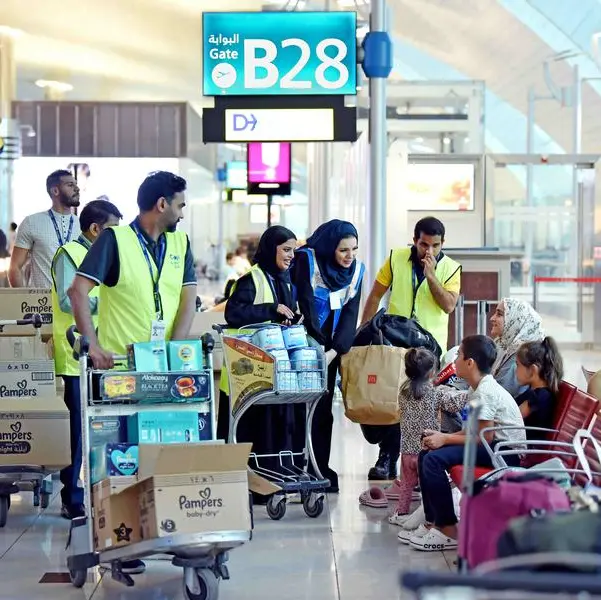The journey towards realizing universal access to modern cooking methods received a boost on Friday following the launch of the first edition of a facilitators training manual on household air pollution.
The 136-page document themed “Household Air Pollution: A Silent Threat to Health and Environment. Let’s Act Together to Save Lives’’, was launched by the Ministry of Health (MoH) and development partners. The document outlines procedures to guide communities and community health workforce on prevention and control of indoor air pollutants responsible for cardiovascular and respiratory diseases as well as cancer.
Health Acting Director General Dr. Patrick Amoth, in his speech read by the head of primary healthcare department Dr. Salim Hussein, said “exposure to air pollution is responsible for a staggering number of preventable illnesses and deaths across the globe making it the single greatest environmental health threat.”
The launch of the guide comes in the wake of a global health crisis occasioned by the COVID-19 pandemic and climate change crisis with a majority of households forced to stay indoors owing to movement restrictions and lockdowns.
“Worth to note is that air pollution exacerbates severity of illness and deaths from COVID-19 and is the leading risk factor for deaths from pneumonia across all age groups.” Explained the director general.
“In Africa, Household Air pollution is among the leading contributors of burden of disease accounting to 18% of all deaths.,” he added.
It is estimated about 3 billion of the world’s poorest population still rely on solid fuels like wood, animal dung, charcoal, crop wastes and coal burned in inefficient and highly polluting stoves for cooking and heating. This has resulted in about 4 million premature deaths annually among children and adults from respiratory and cardiovascular diseases and cancer.
“99% of the people here have been affected by pollution in one way or another, it could be in form of fuel, lighting or in form of smoking. Most of us have being in a household where there was smoke. Said the acting head department of public health at the Ministry of Health Col. Susan Mutua. “We want from now on to protect our children and also our elders from this kind of pollution. The launch of this guide book is therefore welcome news.” Added col. Mutua.
Additionally, widespread use of kerosene stoves and lamps, cause deaths and serious injuries from scalds, burns and poisoning. Although Kenya has made significant progress over the past decades, solid biomass remains the primary cooking fuel used in the country. Over 90% of the rural population and around 75% of all Kenyan households still cook with wood or charcoal. Only about 20% of all households use liquefied petroleum gas (LPG) as their primary cooking fuel. The number of electric cook stoves is extremely low, with around 3% of all households owning an electric appliance.
Faith Wandera, Senior Deputy Director on renewable energy at the Ministry of Energy, told the forum that “Kenya committed to achieve universal access to modern cooking solutions by 2028, during the global clean cooking forum held in 2019 in Nairobi.” She added that, “The launch of the household air pollution training manual is a great step towards strengthening the capacity of community members and associated health work force to contribute to efforts to reduce the adverse and environmental impact of polluting household energy forms such as firewood, charcoal and kerosene.”
The question of access to clean cooking solutions was also a subject of discussion with calls for affordable solutions to reduce use of harmful sources of energy. How do we ensure that this fuel reaches our people out there in an affordable manner? Asked Daniel Wanjohi a board member at the Clean Cooking Association of Kenya. “the private sector also comes in handy, it is very critical that we ensure we bring them on board and above all ensure the policy environment is conducive for access to clean cooking solutions” He added.
Exposure to household air pollution is ranked among the top ten risk factors for deaths in Kenya. The annual deaths attributable to household air pollution in Kenya as per World Health Organization (WHO) estimates of 2016 were 15,140 while the Ministry in 2020 estimated that 23,000 Kenyans died.
Following the launch of the manual, health care workers and community health volunteers will undergo a three-day training on use of the manual. The three-day training exercise will be rolled out in phases beginning with 17 select counties before it is rolled out to the remaining 30 Counties. The 17 counties prioritized in the first phase include Homabay, Migori, Kisii, Siaya, Busia,Kisumu, Kakamega, Vihiga, Nyamira, Nandi, Uasin Gishu, Transnzoia, Westpokot, Machakos, Kiambu, Taita Taveta and Kwale.
Distributed by APO Group on behalf of Ministry of Health, Kenya.
© Press Release 2021
Disclaimer: The contents of this press release was provided from an external third party provider. This website is not responsible for, and does not control, such external content. This content is provided on an “as is” and “as available” basis and has not been edited in any way. Neither this website nor our affiliates guarantee the accuracy of or endorse the views or opinions expressed in this press release.
The press release is provided for informational purposes only. The content does not provide tax, legal or investment advice or opinion regarding the suitability, value or profitability of any particular security, portfolio or investment strategy. Neither this website nor our affiliates shall be liable for any errors or inaccuracies in the content, or for any actions taken by you in reliance thereon. You expressly agree that your use of the information within this article is at your sole risk.
To the fullest extent permitted by applicable law, this website, its parent company, its subsidiaries, its affiliates and the respective shareholders, directors, officers, employees, agents, advertisers, content providers and licensors will not be liable (jointly or severally) to you for any direct, indirect, consequential, special, incidental, punitive or exemplary damages, including without limitation, lost profits, lost savings and lost revenues, whether in negligence, tort, contract or any other theory of liability, even if the parties have been advised of the possibility or could have foreseen any such damages.










